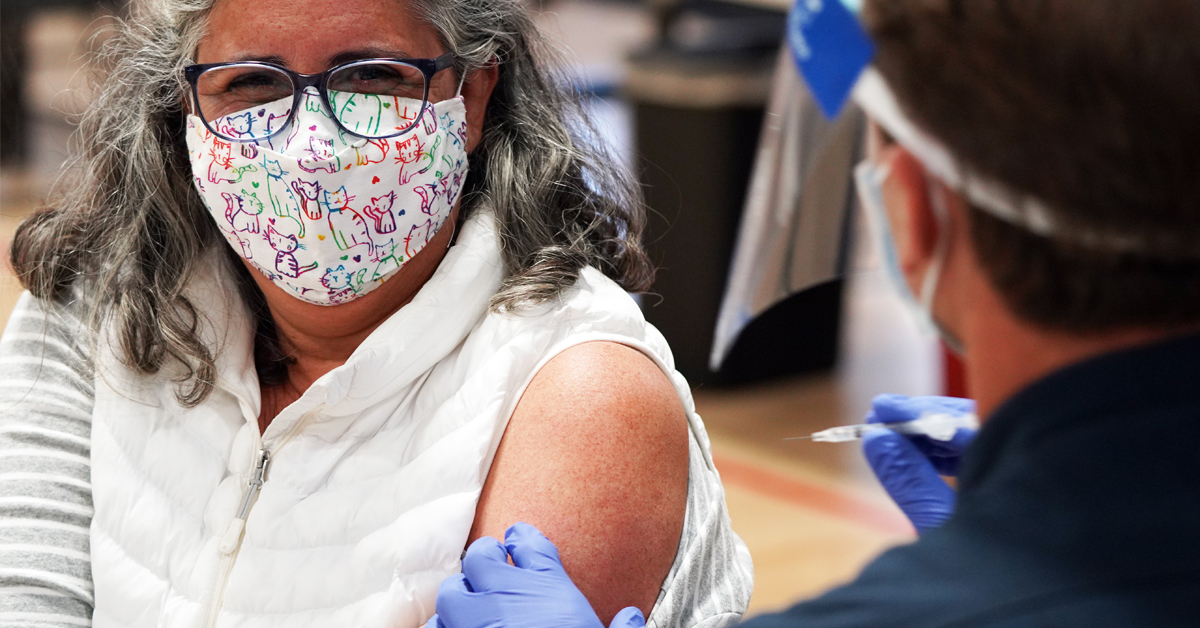
Pen CAT4 can be used to quickly identify patients who are eligible for vaccination in phase 1b of the rollout. This is a useful tool – regardless of whether or not your practice is currently administering COVID-19 vaccines.
If you are providing vaccinations, you can let your eligible patients know that they have been identified as eligible for phase 1b, and how and when they can access a vaccination.
If you are not providing vaccinations, you can let these eligible patients know that your practice is not administering vaccinations, and direct them to the Vaccine Eligibility Checker to find their nearest vaccination provider.
When formulating your promotional messages, it is very important to first be aware of the TGA guidelines relating to advertising of covid-19 vaccinations to ensure your promotion is lawful. Vaccination practices can use the messages included in the Australian Department of Health communication kit for general practices.
Priority groups eligible for vaccination in Phase 1b include:
- people aged above 70
- Aboriginal and Torres Strait Islander people aged over 55
- people with a chronic condition which places them at increased risk of severe illness due to COVID-19*
- people with disability
- health care workers, critical and high risk workers and meat processors*.
*The Priority groups for COVID-19 Vaccination Program: Phase 1b document provides clear explanation of groups who are eligible/ineligible to receive vaccination in phase 1b, including lists of eligible occupations and conditions. Please note:
- Some conditions such as asthma and chronic kidney disease (CKD) must be classed as severe to meet eligibility requirements.
- Pfizer is now the preferred vaccine for people aged under 50. Please consider this when contacting eligible 1b patients.
Pen CS has provided a number of CAT4 recipes to help you identify eligible patients for vaccination in the 1b cohort. These include:
- how to identify Indigenous patients over 55
- how to identify patients over 70
- how to identify patients with a BMI >40
- how to identify patients with a cancer diagnosis.
Identifying people with specific chronic conditions
As mentioned, some people with chronic conditions (asthma and CKD) are only eligible if their condition is classified as severe. Therefore, it is best to use a separate search to identify people in these categories.
Identifying people with severe chronic kidney disease
For the purposes of COVID-19 vaccination, severe CKD is classified as having an eGFR <44 mL/min. To identify these people follow the following steps for the filter and report.
Filter steps:
- In the General tab, write 69 in the End Age box to exclude people over 70 – you will have included them in the >70s list earlier.
- In the Conditions tab, tick Chronic Renal Failure (on the far right). Click Recalculate.
Report steps:
Click on the Pathology tab, then select eGFR from the sub-tabs. Click on all of the pink and red sections of the graph (all those with an eGFR <45 mL/min). Click Export to print or save the patient list.
Identifying people with severe asthma
Identifying people with severe asthma using data alone can be tricky, as data may not tell the whole story. For example, one person may have found a combination of therapies that work to keep their asthma well controlled and may not have suffered an ‘asthma attack’ for several years. Meanwhile, another person on the same medications may have very poorly controlled asthma and been hospitalised several times in the past year.
A good approach to identifying people with severe asthma would be to use CAT4 to extract a list of patients on combination therapy for asthma, and then have the usual GP review the list. You can create individual lists for each GP at your practice, then ask each GP to identify which patients on the list have severe asthma.
Filter steps:
- In the General tab, write 69 in the End Age box to exclude people over 70 – you will have included them in the >70s list earlier.
- In the Conditions tab, tick Asthma.
- In the Providers tab, hit Select All/None to untick all the providers. Then select one provider. Click Recalculate.
Report steps:
- In the Demographics tab, hit Select All. Click Export to print or save the patient list.
- Now repeat the last two steps for each doctor in your practice. Leave the General and Conditions filters in place, untick the first provider and tick the second provider in the list. Hit recalculate, select all, then export the list. Repeat for all GPs.
- Hand each GP the list of their own patients and ask them to identify those with severe asthma who may be at risk of developing serious illness if they were to contract COVID-19. Recall identified patients using your chosen method (for example: SMS).
Identifying people with other chronic conditions
Now you can identify remaining chronic conditions using Pen CAT4. Some less common conditions are not included in the CAT4 filters; however, you can use your clinical software’s search functions to identify these. Here’s how to identify common chronic conditions in Pen CAT4.
Filter steps:
- In the General tab, write 69 in the End Age box to exclude people over 70 – you will have included them in the >70s list earlier.
Report steps:
- In the Disease tab, select ‘Diabetes I’, ‘Diabetes II’, ‘Undefined Diabetic’, ‘COPD’, ‘CHD’, ‘Heart Failure’, ‘Stroke’, ‘Dementia’, ‘Atrial Fibrillation’ and ‘Transplant’. Click Export to print or save the patient list.
We are here to help
If you need any assistance with using Pen CAT4 or for questions about recalling patients for vaccination, please call 03 9347 1188, email your relationship manager directly, or email primarycare@nwmphn.org.au




